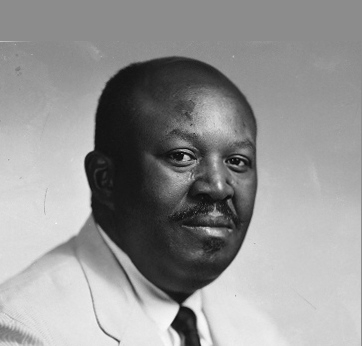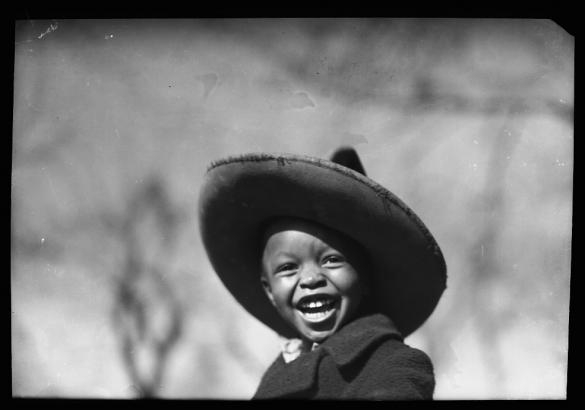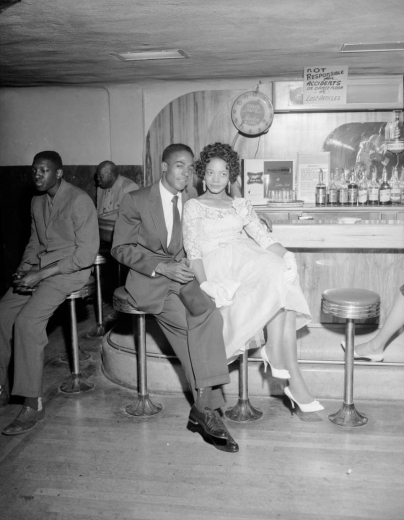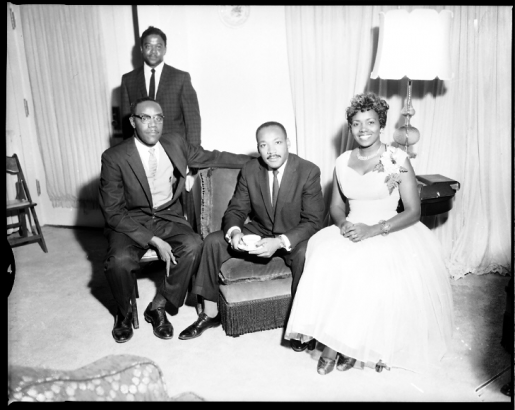Photographer who created the largest visual record of Denver's African-American history, with photos of everything from daily events to visits by leaders like Martin Luther King, Jr.
Burnis “Mac” McCloud was born in 1908 in Birmingham, Alabama. His father was a Baptist minister, and his mother stayed at home to take care of Burnis and his siblings.
From a young age, Burnis loved to watch people and the world around him. His interest in photography was sparked at the age of ten, when he found old camera parts in a junkyard.
He took the parts to a photography shop owner, who said if Burnis could put the parts together to make a camera, he would teach him how to use it. Burnis was able to build the camera, and soon was taking pictures of everything he could find.
Burnis decided to move from Alabama to Denver in 1930, when he was twenty-two years old. America was going through The Great Depression, and many people had to leave their homes in order to find work.
Burnis managed to get a job as a custodian in the Colorado State Capitol building. Working at the capitol allowed Burnis to meet many important people. Burnis brought his photography equipment to Denver, and even set up a darkroom in his house. Even though he soon married and had children, Burnis still found time to take and develop his photos.
For many years, Burnis did not think he would be able to make a living selling his photographs. He liked to take photos as a hobby, but he knew he would still have to work as a custodian to support his family. People saw how good Burnis' pictures were, and told him to enter them in contests.
Burnis finally agreed in 1939, and submitted a picture of his four-year-old son to a contest sponsored by the New York World's Fair. The photograph, which Burnis named 'The Smiling Cowboy' won first place and was displayed at the World's Fair. 'The Smiling Cowboy' won several other contests across the country, and was even featured in Photography Magazine. Burnis began entering (and winning!) many more competitions, and realized that photography was his real calling.
When the United States entered World War II in 1941, Burnis left his job and his family to fight in the Pacific. At the end of the War in 1945, Burnis came back to his custodian job at the State Capitol.
However, he also decided he was going to go to college. The G.I. Bill gave the men who fought in World War II the chance to get degrees and better jobs after the War.
Burnis went to the University of Denver, and got a degree in Photography.
Many officials at the Capitol knew about Burnis’ talent for photography, and he was able to photograph some of the most important politicians – including Presidents Harry S. Truman and Dwight Eisenhower when they visited Denver. Even though he loved photography, Burnis still wasn't sure that he would be able to leave his job to become a full-time photographer after he graduated.
Burnis soon had his decision made for him - in 1952, the State Capitol decided to use a different, less expensive company for custodians. Since Burnis was with the old company, he was laid off from his job.
He saw this as the opportunity he needed to become a full-time professional photographer.
By the time Burnis lost his job at the Capitol, he was known as the best photographer in Denver’s African American community. He was in high demand to photograph everything from weddings to prominent figures like Martin Luther King, Jr.
Burnis took pictures ranging from the most mundane parts of daily life to the best-attended social events held by Denver’s African American elite. Burnis gave Denver’s African American community a photographic history in a time when their lives and events were not covered in the mainstream media.
Most white-dominated newspapers, such as the Rocky Mountain News and Denver Post, would not cover social and cultural events held by the black community. As a result, Burnis McCloud’s photographs are the largest documentation of what life was like for African Americans in Denver from the 1930’s through the 1980’s.
Burnis lived in Denver's Five Points neighborhood, which was well known as a center of African American jazz and culture. Because of segregation laws, many important African American actors, political figures, and musicians were unable to stay in downtown Denver hotels. Instead, they stayed at hotels and in homes in Five Points, an African American neighborhood. Burnis got to know many famous African Americans who spent time in Denver - some even stayed in his house!
He was a friend of Martin Luther King, Jr. and photographed him on many occasions.
Burnis was a respected member of the African American community and had admirers throughout Denver.
In fact, he had a weekly feature in the Denver Weekly News, Denver’s largest African American newspaper. He was known for making everyone – no matter if they were famous or not – feel important when he took their photograph.
He was also known for his hard work. He would usually cover three or four different events during the day, then go home to the photography studio in the basement of his house to develop the pictures at night.
When Burnis McCloud passed away in 1990, he left behind the single largest collection of historic photographs of Denver’s African American community.
Although by the time of his death there were more photographers throughout Denver capturing the events in the black community, Burnis was instrumental in making sure that both the lives of ordinary African Americans and historic events were preserved for the future.
minister – a person whose job is to lead church services and perform religious ceremonies like weddings and baptisms
The Great Depression – a period from 1929 throughout most of the 1930s where an economic downturn brought extreme poverty and joblessness throughout the United States and the world
custodian – a person whose job is to clean, maintain, and look after a building
darkroom – a room used for developing traditional film photographs. All light is kept out, and chemicals are used to process the film into pictures.
G.I. Bill – a law passed in 1944 that gave U.S. soldiers who had served in World War II many benefits such as college scholarships and home loans
prominent – important or well-known
mundane – common or uninteresting
segregation - laws in the United States starting in 1876 that prevented white and black people from sharing schools, neighborhoods, and even drinking fountains. Segregation was declared illegal in the Civil Rights Act of 1964.
urge – to make a strong recommendation to do something
instrumental – the most crucial person or thing in an event
Why do you think newspapers like The Rocky Mountain News and The Denver Post didn't cover African-American events in the 1920's-1950's?
Imagine you are a photographer. What would you take pictures of? Why?
What records other than photographs would you use to find out about people in the past? Where would you find them?
Look up the difference between a primary source and a secondary source. Are photographs primary sources or secondary sources?
Burnis McCloud Manuscript Collection (A collection including thousands of photographs and unprocessed negatives from Burnis McCloud's collection. Also includes personal, business, and family papers. The Burnis McCloud collection can be seen in person on the 5th floor of the DPL Central Branch).
Biography Clipping Files (Newspaper articles, including obituaries, about Burnis McCloud that can be seen in person on the 5th floor of the DPL Central Branch and at the Blair-Caldwell African American Research Library)
Denver Public Library, Special Collections and Archives Department Blog - Acclaimed Western Photographers: Burnis McCloud (A biography of Burnis McCloud, including many photographs from the Burnis McCloud photograph collection)
Burnis McCloud Photographs in the Denver Public Library Digital Collection
The Denver Weekly News on Microfilm (can be viewed in-person at the Blair-Caldwell African American Research Library)
Five Points-Whittier Neighborhood History
The Blair-Caldwell African American Research Library
Books about Burnis McCloud
- Growing Up Black in Denver (A book profiling important African Americans in Denver, including Burnis McCloud)
Westword article about Burnis McCloud
Colorado Public Radio article on the Burnis McCloud house (with audio interview)






this guy is pretty cool
this guy is pretty cool
burnis is very cool
burnis is very cool
wow!!!!!!!!!!!!!!!!!
wow!!!!!!!!!!!!!!!!!
i want a picture by him
i want a picture by him
hello :)
hello :)
hello :)
hello :)
Add new comment